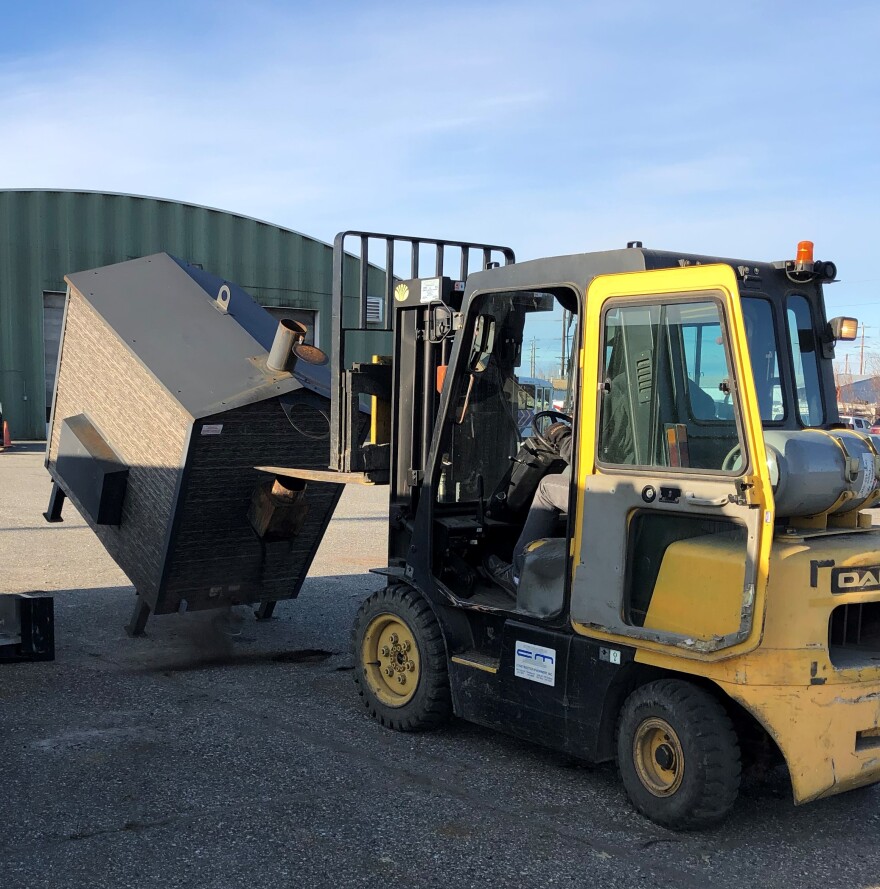One way to clean up winter air is to get Interior Alaska residents to stop using old, polluting woodstoves. The Environmental Protection Agency just granted five million dollars to the state’s Air Quality office to enhance a woodstove-buy-back program. They are passing some of it on to the Fairbanks North Star Borough, which has been running a change-out program for 10 years.
A forklift gently picks up an old barrel stove. Todd Thompson drives it around to a big Dumpster and lifts it in. The Dumpster full of old woodstoves is off to a recycling contractor who will crush them so they can’t pollute anymore.
The Fairbanks North Star Borough has been paying people to give up their polluting devices since 2010. The money comes from EPA Targeted Airshed grants, and the Borough just added 3.4 million dollars to the pot. But the terms have changed a bit.
“This grant… changing your woodstove for a cleaner source of fuel.”

Nick Czarnecki is the borough’s Air Quality manager. His office is smaller now, with fewer employees since the state’s DEC took on compliance with the Clean Air Act.
“Its pushing staff but right now we do have sufficient capacity to operate all these grant programs.”
Which is good news for someone who wants to install a new oil boiler or hook up to natural gas.
The goal of the grant program is cleaner air, so the incentives for surrendering a solid-fuel burning device depend on how much it will clean-up the household or business.
“For example, if you have a hydronic heater and an oil-fired boiler, well, if you could qualify for a $12,000 incentive, that would be enough to upgrade your existing oil boiler, and get rid of the hydronic heater and it would probably save you money in fuel costs, too.”
Incentives for just getting rid of a hydronic heater are about $5,000. But if you turn it in and instead hook up to natural gas, you can get $14,000.

In the back lot of the Air Quality office on Peger Road, Todd Thompson tips a hydronic heater on to its feet.
Czarnecki says there are about 105 applications already working through the process. Its estimated there are 13,000 solid-fuel burning devices in what is called the “non-attainment” area for clean air. There is probably enough money in this latest grant for about 400 buy-outs.
“For a woodstove, the incentive is $6,000, and if you want to go to natural gas it’s $10,000.”
Czarnecki says each case is unique, and burners may not know all the possibilities. Although there is an on-line application at FNSB.us, he encourages anyone interested in the program to call the air quality office for their best deal.
Current fund balance in the program's account, from previous grants, is $4.3 million, about $1 million of that is already is committed to the 105 applications working through the process. This newest grant will add another $3.4 million for buying-out solid fuel-burning devices, with the remainer committed to education and outreach.


